This topic details View configuration for Virtual Desktop Agents. RDS Farms are detailed at https://www.carlstalhood.com/horizon-6-rds-farmspools/.
Navigation
Prep
- Each pool points to one vSphere cluster. 32 hosts maximum. If Virtual SAN, 20 hosts maximum.
- Ensure vSwitch has sufficient ports for the new virtual desktops.
- Ensure the VLAN has enough DHCP addresses for the desktop pool.
- Lower the DHCP lease time too.
- KMS Licensing is required for Windows 7+ and/or Office 2010+
- The virtual desktop pools will use the same hardware specs (e.g. vCPUs, memory size, network label) specified on the master virtual desktop. Adjust accordingly.
- The parent image should be in the same cluster where the linked clone virtual desktops will be created.
Disk space:
- One or more LUNs for storage of the virtual desktops. Maximum of 140 desktops per VMFS5 LUN. Up to 250+ desktops per NFS LUN.
- By default, Replicas are copied to each LUN that contains virtual desktops. It’s possible to place the Replica and the linked clones on separate LUNs. If you use a dedicated Replica LUN, then there is only one copy of the Replica no matter how many LUNs are used for storing virtual desktops. Note: NFS VAAI requires Replica to be copied to each virtual desktop LUN.
- Persistent disks can be used to store the user’s profile (but not user-installed applications). To enable Persistent disks, the pool must be Dedicated Assignment. You can place the persistent disks on a LUN that is separate from the linked clones LUN. A better option is to use View Persona or User Environment Manager instead of Persistent disks.
- Disposable disks. In Dedicated Assignment pools, you have the option of creating Disposable Disks. These disks are always stored with the virtual desktop (you can’t choose a dedicated disposable disk LUN). If you’re planning to frequently refresh the desktops, there’s no point in using Disposable disks.
- .vswp files. Allocate disk space for memory swap and graphics memory overhead. Any unreserved memory will result in a .vswp file. For example, if the master virtual desktop has 2 GB of RAM configured and none of it is reserved then each linked clone will have a 2 GB .vswp file.
Floating (Non-Persistent) Desktop Pool
- In View Administrator, on the left, expand Catalog and click Desktop Pools.
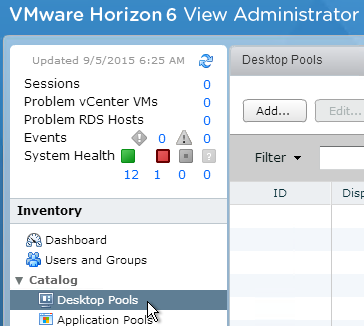
- On the right, you can clone an existing pool. This copies many of the settings from the existing pool into the new pool.
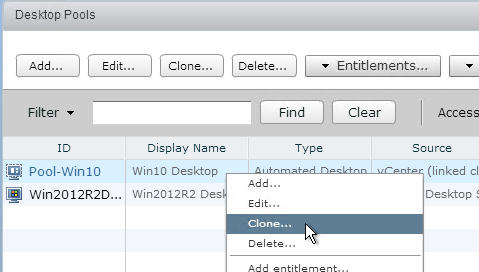
- Or just click Add.
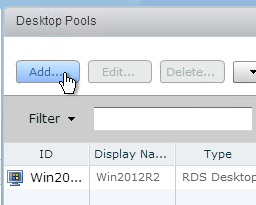
- In the Type page, select Automated Desktop Pool and click Next.
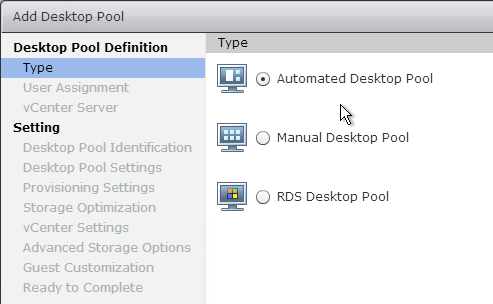
- In the User Assignment page, select Floating and click Next.
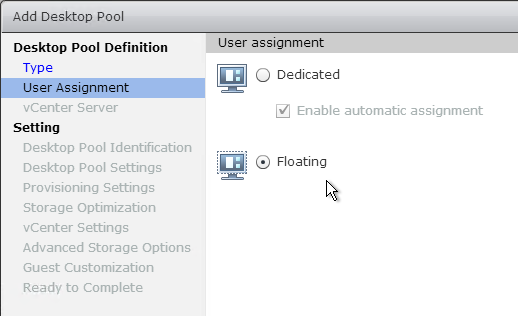
- In the vCenter Server page, select View Composer linked clones. Select the vCenter server and click Next.
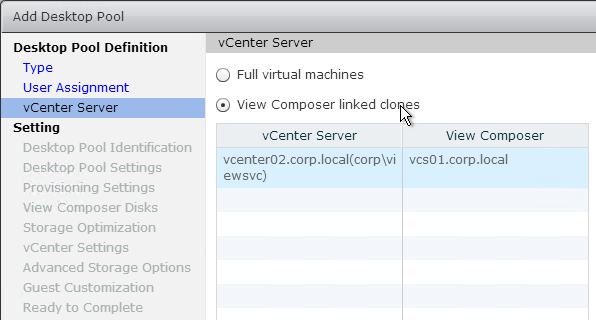
- In the Pool Identification page, enter a name for the pool. A VM folder with the Pool ID as the name will be created in vCenter. Also, assign the pool to an Access group to restrict delegated administration. Note: If you intend to integrate with VMware Identity Manager, then make sure you select the root Access group. Other Access Groups won’t work. Click Next.
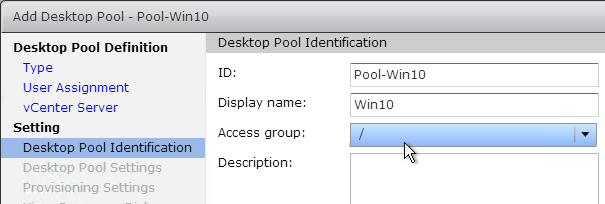
- In the Pool Settings page do the following:
- Change the selection for Automatically logoff after disconnect to After and specify a disconnect timer.
- Change the selection for Delete or refresh desktop on logoff to Refresh Immediately.
- Change the selection for Allow users to choose protocol to No. Then make your desired choices for 3D rendering and Maximum monitors. If not using 3D, max out the number of monitors and the resolution. This will grant more video RAM for each desktop if their video card is set to automatic.
- Note: Windows 7 MMR (H.264 only) requires 3D rendering to be enabled.
- Scroll down.
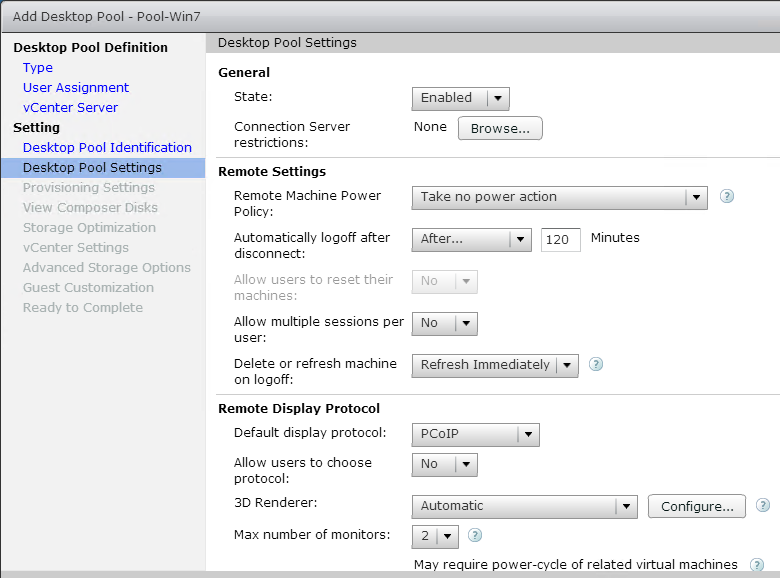
- Check the box next to HTML Access.
- HTML Access requires monitor resolution to be 1920×1200 or higher.
- Click Next.
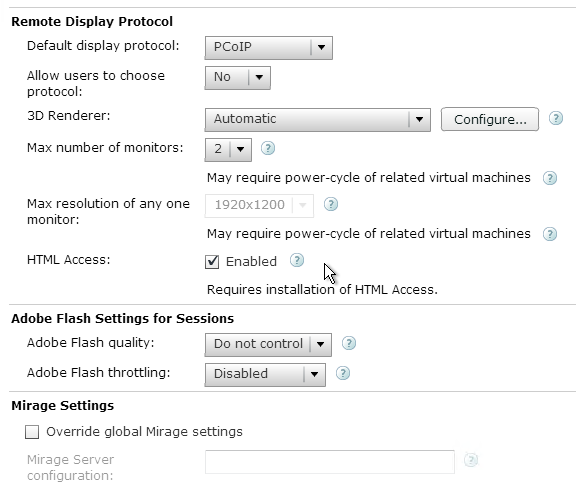
- In the Provisioning Settings page, enter a naming pattern. You can use {n:fixed=3} to specify the location for the incremented numerals. Make sure the naming pattern does not conflict with any existing machines.
- Enter the maximum number of desktops to create. You can create all of them now or wait to create them as users connect. When a user connects to one of these desktops, View immediately creates another desktop (up to the maximum) and powers it on.
- Enter the number of spare (idle, unassigned, unused) desktops you want powered on. View maintains this number up to the maximum number of desktops.
- In Horizon 6.2, the maximum number of desktops per pool is 2,000. Ensure that the DHCP scope has enough addresses for the Max number of desktops specified here. Click Next.
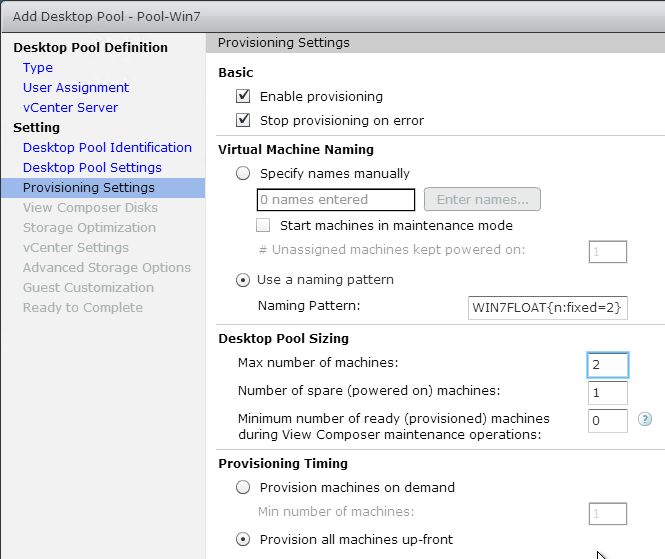
- In the Disposable File Redirection page, select Do not redirect disposable files and click Next. Since we’re refreshing the desktops on logoff, there’s no need for a separate disposable disk.
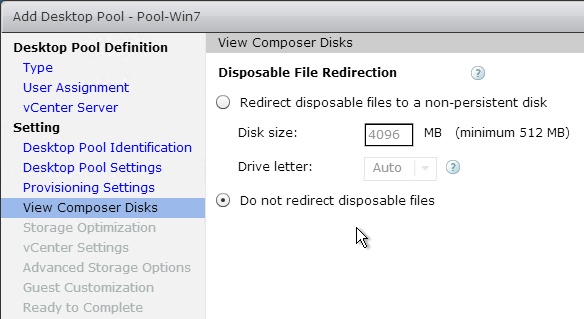
- In the Storage Optimization page, check the box for Select separate datastores for replica and OS disk if you want to use storage tiering. Click Next.
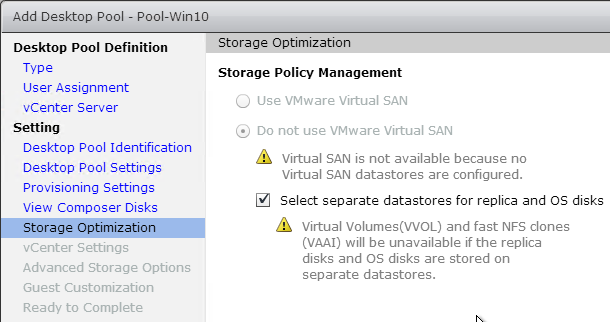
- In the vCenter Settings page, most of these are self-explanatory. Click Browse next to each option and make your selection.
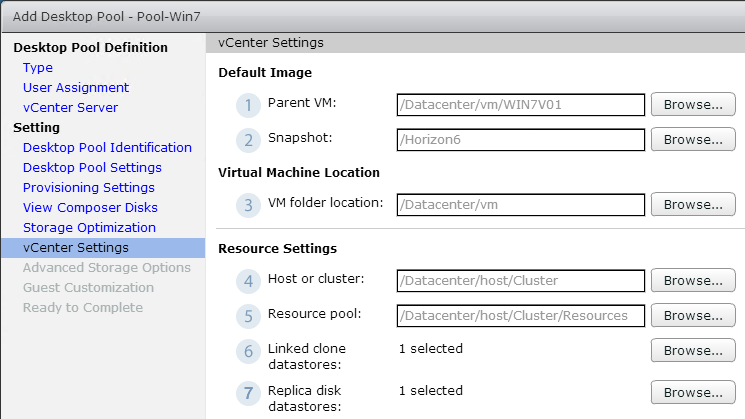
- If the Parent VM is not showing up in the list then check the box next to Show all parent VMs and click the … next to the VM to see the issue.
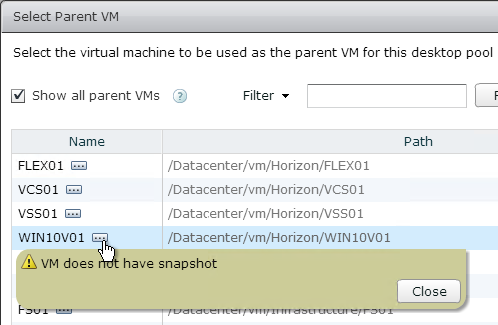
- For Linked clone datastores, select one or more datastores on which the virtual desktops will be placed. Select your Storage Overcommit preference. Since you are refreshing desktops on every logoff, they should stay small so Unbounded is probably acceptable. VMware recommends no more than 140 virtual desktops per VAAI-enabled LUN. If the LUN is not VAAI enabled, 64 is the maximum. Click OK when done.
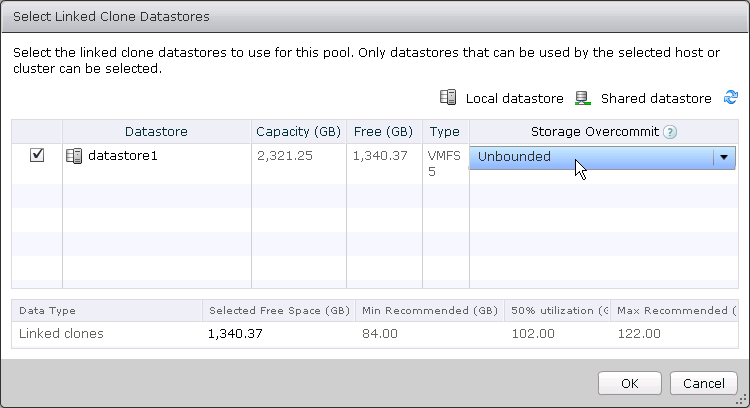
- For Select Replica Disk Datastores, select one datastore for the replica and then click OK.
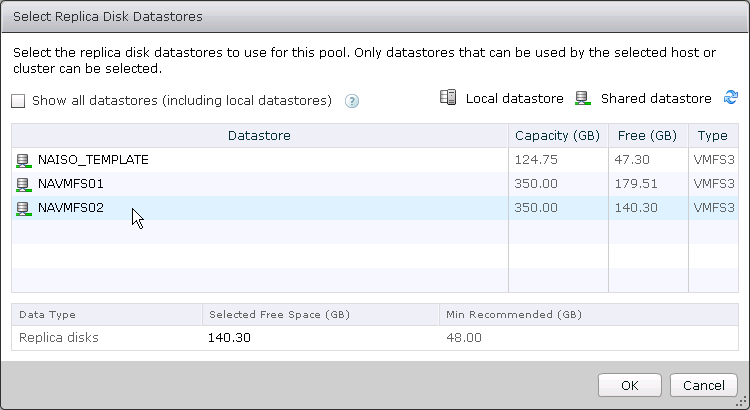
- Then click Next.
- In the Advanced Storage Options page, be aware of the following:
- View Storage Accelerator creates digest files, which consumes disk space. Creation of the digest files requires IOPS. Make sure to set the blackout times so that this digest creation does not happen during peak hours.
- Reclaim VM disk space is not useful for non-persistent desktops.
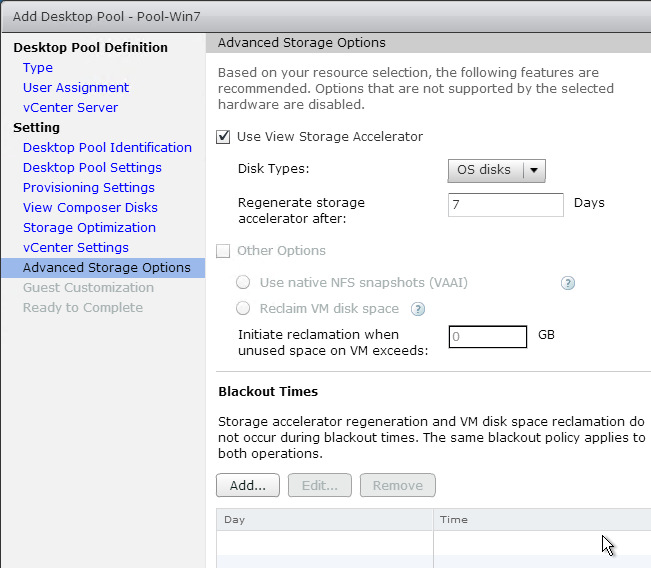
- If you scroll down, there’s a new Transparent Page Sharing Scope. The default is no sharing. Use one of the other options to enable sharing. Click Next.
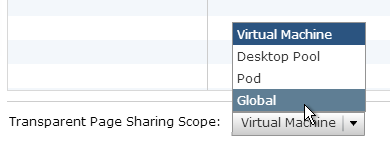
- In the Guest Customization page, next to AD container, click Browse and select the OU where virtual desktop computer objects will be placed.
- Consider checking the box next to Allow reuse of pre-existing computer accounts. Click Next.
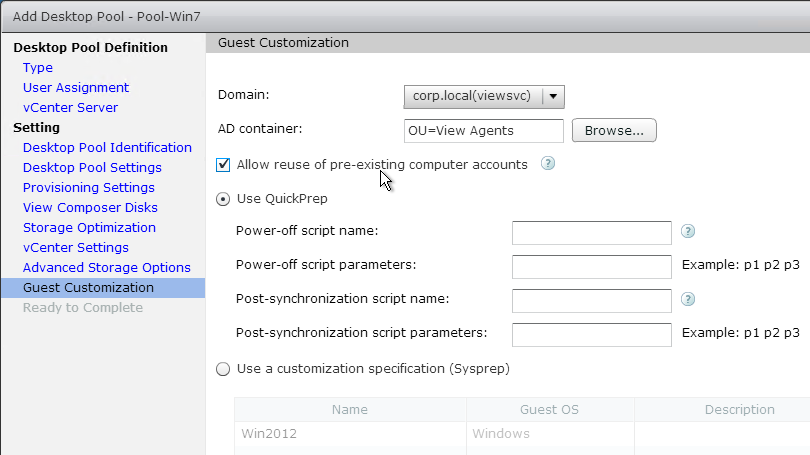
- In the Ready to Complete page, you may entitle users now or later. Click Finish.
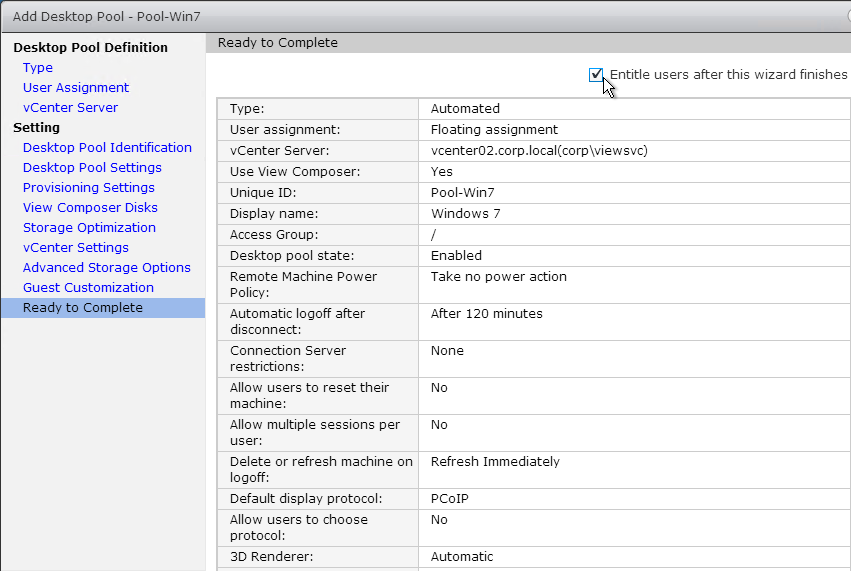
- To check the status of the virtual desktops, go to Catalog > Desktop Pools.
- Double-click the pool name.
- On the Inventory tab, click Desktops (View Composer Details). There’s a refresh button.

- You can also view the status of the desktops by looking at the Dashboard.
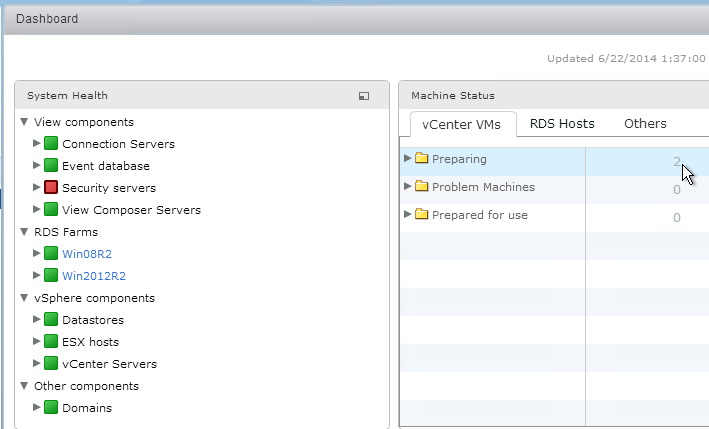
- Your VMs should eventually have a status of Available.
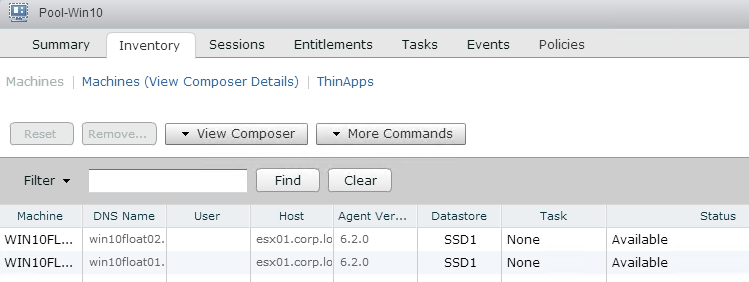
- If you encounter issues with View Composer, see VMware 2087379 VMware Horizon View Composer help center
Entitle Virtual Desktops
To make a pool accessible by a user, it must be entitled.
- Go to Catalog > Desktop Pools.
- Double-click the pool name.
- On the Settings tab, click Entitlements.
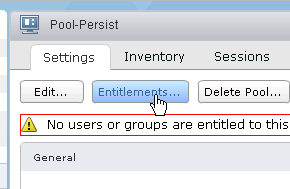
- In the Entitlements window, click Add.
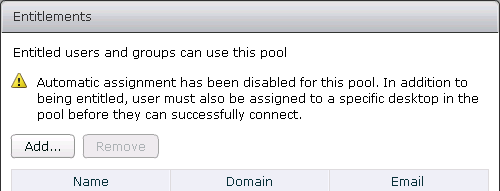
- Find a group that will have permission to log into these desktops and click OK.
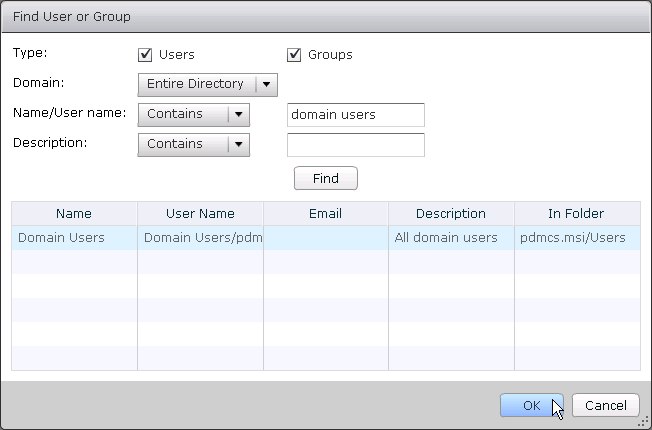
- Then click OK.
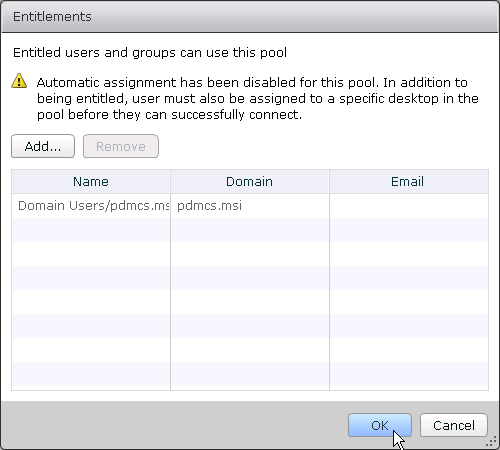
- For a Persistent pool, go to the Inventory tab to see the desktops. Select a desktop and under More Commands click Assign User.
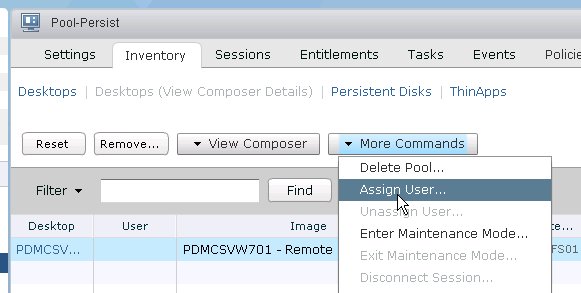
- Find the user and click OK. Repeat to assign users to additional desktops.
Update a Pool
- Power on the master/parent virtual desktop.
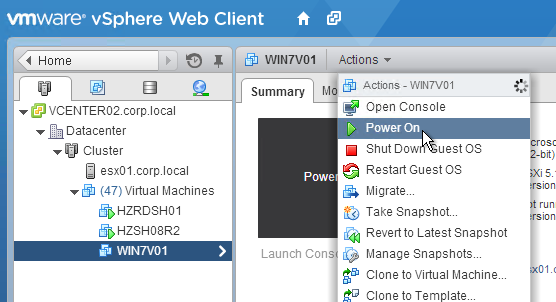
- After making your changes, shut down the master virtual desktop.

- Right-click the virtual machine and take snapshot. You must create a new snapshot.
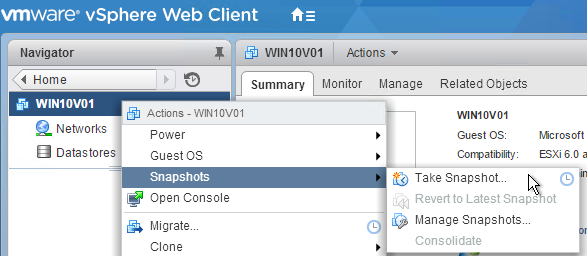
- Name the snapshot and click OK.

- If you do this often, you’ll need to periodically delete the older snapshots. Right-click the master VM and click Manage Snapshots.
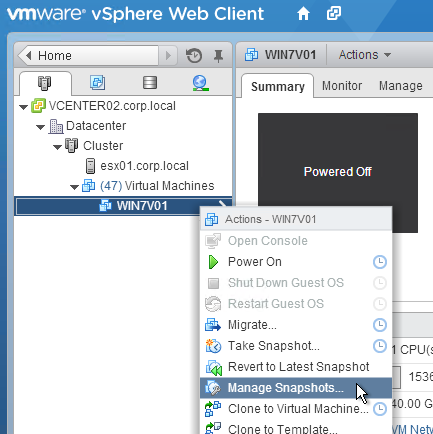
- Delete one or more of the snapshots.
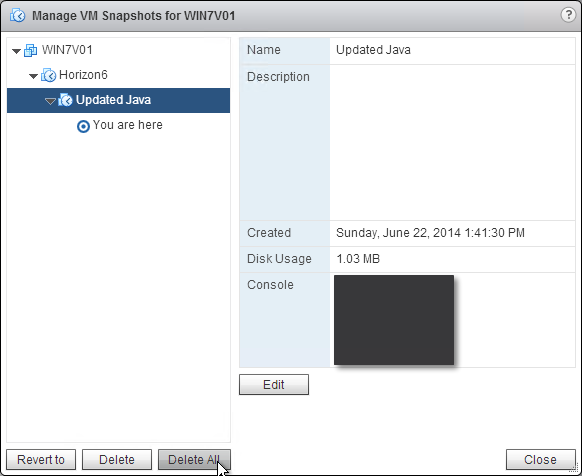
- In View Administrator, go to Inventory > Pools.
- Double-click a pool name.
- On the Settings tab, click View Composer and then click Recompose.
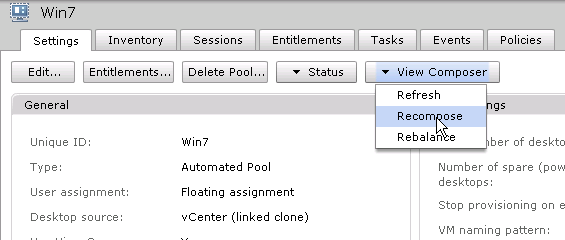
- In the Image page, select the new snapshot and click Next.
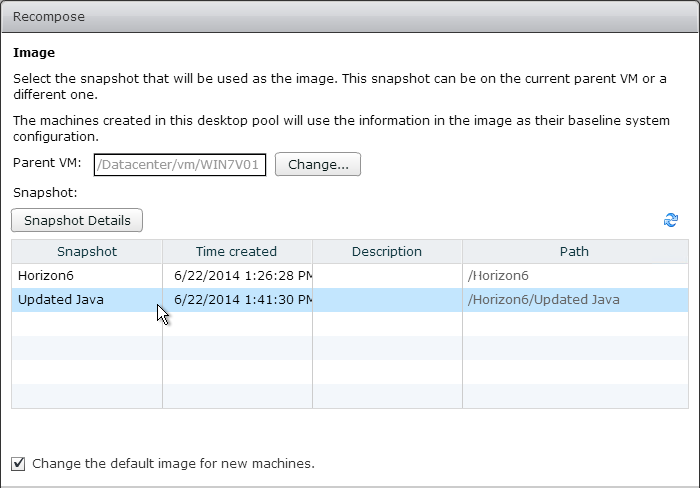
- In the Scheduling page, decide when to apply this new image and then click Next.
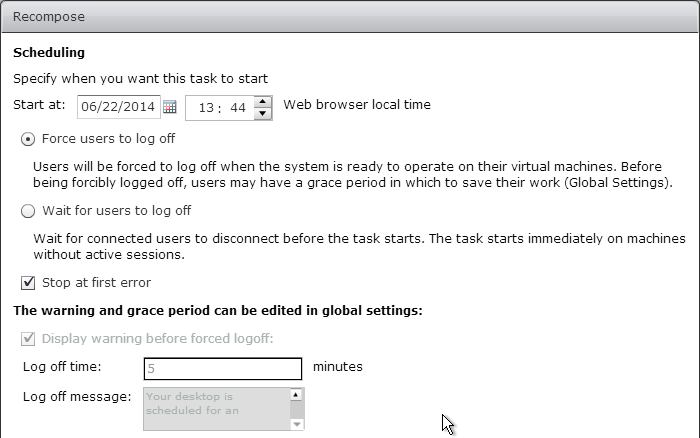
- In the Ready to Complete page, click Finish.
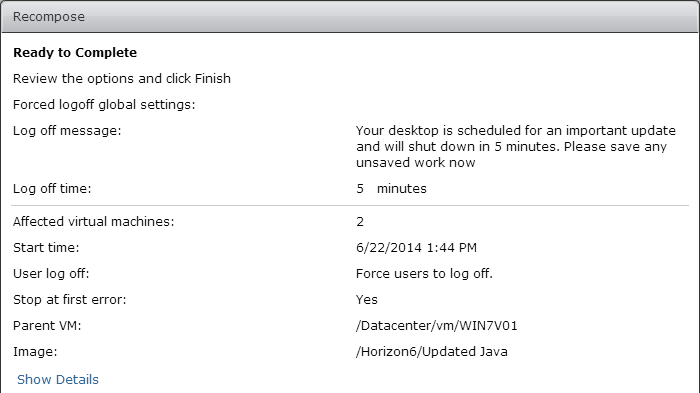
- On the Inventory tab, you can click Desktops (View Composer Details) to check on the status of the recompose task.
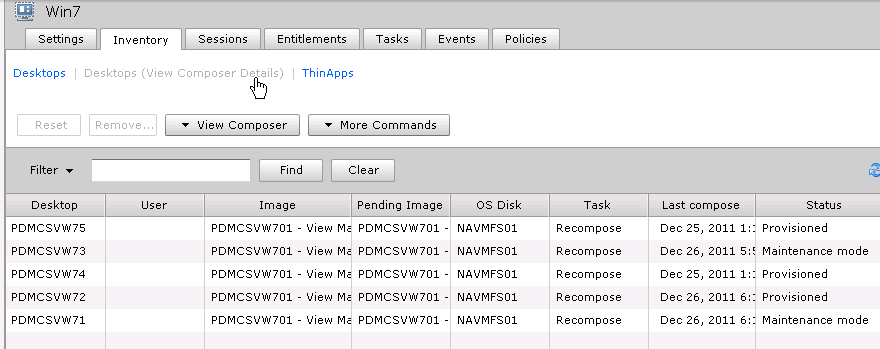
Related Pages
- Back to VMware Horizon 6